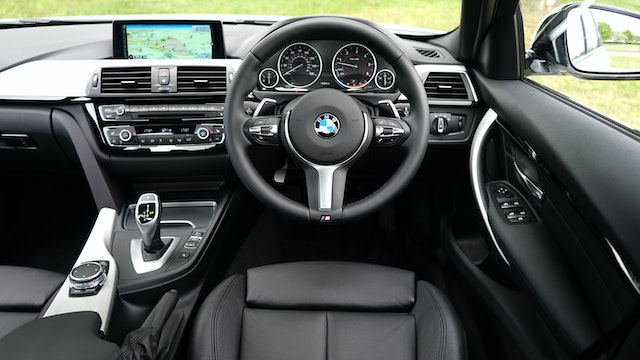Ford, a name synonymous with innovation in the automotive industry, has always strived to be at the forefront of transportation trends. From its inception in the early 20th century, the company's founders and engineers have consistently pushed the boundaries of what's possible in personal mobility. This article will take you on a journey through Ford's vision for the future of transportation, examining key milestones and innovations that have shaped its path from concept to reality.
Pioneering the Mass Market Automobile
The Birth of Ford
The story of Ford's vision for the future of transportation begins with its founder, Henry Ford. Born in 1863, Ford grew up on a farm in Dearborn, Michigan, where he developed a fascination with machinery. This early exposure to machines and mechanics would become the foundation for his future endeavors in the automotive industry.
The Model T: A Game Changer
In 1908, Ford introduced the Model T, a car that would forever change the way people thought about personal transportation. While it wasn't the first car, the Model T was the first to be mass-produced on a large scale, making automobiles accessible to the average American. This was the foundation of Ford's vision: a world where mobility was not limited to the wealthy but available to all.
Revolutionizing Manufacturing: The Assembly Line
The Moving Assembly Line
One of Ford's most significant contributions to the future of transportation was the introduction of the moving assembly line in 1913. This innovation revolutionized the manufacturing process. Instead of each worker building an entire car, the assembly line allowed for specialization, with each worker focusing on a specific task as the vehicle moved along the line.
Efficiency and Affordability
The moving assembly line drastically reduced production time and costs. The Model T, already affordable, became even more accessible to consumers. Ford's vision for the future of transportation was not just about the vehicles themselves but also the way they were made—efficiently and affordably.
The Five Dollar Day: A Landmark in Labor
The "Five Dollar Day" Initiative
In 1914, Ford introduced the "Five Dollar Day," a landmark in labor history. This policy doubled the industry-standard wage, offering Ford workers a daily wage of $5, provided they met certain criteria such as good conduct and efficiency.
Impact on Labor Practices
The "Five Dollar Day" had a profound impact on labor practices not only within Ford but across the industry. At the time, many workers faced harsh conditions and low wages, but Ford's initiative brought about positive change. It attracted skilled workers and increased employee loyalty, contributing to Ford's vision of a prosperous workforce.
The Ford V-8: Performance and Power
Introduction to the Ford V-8
In 1932, Ford unveiled the Ford V-8, a model that would become an icon of performance and power. The "V-8" designation referred to the eight-cylinder engine that set the Ford V-8 apart from its competitors.
Influence on Hot Rodding
The Ford V-8 was a favorite among hot rodders, enthusiasts who modified and customized their vehicles for increased speed and performance. The V-8 engine's design made it easy to enhance its power, leading to the emergence of hot rod culture. This model demonstrated Ford's commitment to not only practical transportation but also exciting performance.
The Post-War Boom and the Ford F-Series
The Post-War Economic Boom
Following World War II, the American economy experienced a post-war boom. This period saw the introduction of several iconic Ford models, including the Ford F-Series trucks. The F-Series would go on to become a symbol of American reliability and durability.
Best-Selling Truck in America
The Ford F-Series has consistently been the best-selling truck in the United States. It is renowned for its durability and reliability. The truck's adaptability has made it a favorite for various purposes, from construction sites to family transportation. Ford's vision was not limited to personal cars but also extended to work vehicles that could support a growing economy.
The Ford Mustang: A New American Icon
Introduction to the Ford Mustang
In 1964, Ford introduced a car that would become a cultural phenomenon: the Ford Mustang. The Mustang's combination of affordability, style, and performance appealed to a broad audience and set the standard for the modern American muscle car.
Impact on the Pony Car Segment
The Ford Mustang created the "pony car" segment, referring to a new breed of compact, sporty, and affordable cars. The Mustang's sleek design, powerful engine options, and reasonable price made it a hit with consumers. Ford's vision for the future of transportation was not just about practicality but also about exhilarating driving experiences.
The Ford Explorer: Pioneering the SUV Segment
Introduction to the Ford Explorer
In 1990, Ford introduced the Ford Explorer, marking the beginning of the modern SUV era. The Explorer was designed to offer the versatility of an SUV while providing a comfortable and family-friendly driving experience.
Shaping the SUV Landscape
The Ford Explorer was instrumental in popularizing the SUV segment. Its blend of off-road capability, ample cargo space, and car-like comfort made it a hit with consumers. The Explorer's success influenced other automakers to develop their own SUV models, contributing to the SUV boom.
The Ford GT: A Supercar with Racing Roots
Introduction to the Ford GT
The Ford GT, introduced in 2005, is a modern interpretation of the legendary Ford GT40, which won the 24 Hours of Le Mans race in the 1960s. The GT is a supercar designed for performance and speed, paying homage to Ford's rich racing history.
Le Mans Victory
In 2016, Ford made a triumphant return to Le Mans with the Ford GT, echoing the historic victory of the original GT40. The GT's success at Le Mans highlighted Ford's commitment to innovation and performance in the modern era.
The Ford Bronco: An Icon of Off-Road Adventure
Introduction to the Ford Bronco
The Ford Bronco, first introduced in 1966, was designed as an off-road vehicle capable of tackling rugged terrain. Its rugged design and capabilities made it a favorite among outdoor enthusiasts.
Revival of the Bronco
After a hiatus, Ford revived the Bronco in 2021. The new Bronco retains the spirit of adventure and off-road prowess of the original while incorporating modern technologies and comforts. The Bronco's return has been highly anticipated by fans of the iconic off-roader.
The Ford Escape: A Versatile Crossover
Introduction to the Ford Escape
The Ford Escape, introduced in 2000, was part of the early wave of compact crossovers. It offered a blend of the utility of an SUV with the maneuverability of a smaller vehicle.
Continued Popularity
The Ford Escape has remained a popular choice among consumers, thanks to its versatility and efficiency. It has been a key player in the crossover market, contributing to Ford's reputation for producing vehicles that meet a wide range of consumer needs.
The Electric Revolution: Ford Mustang Mach-E and F-150 Lightning
Introduction to the Mustang Mach-E
In 2020, Ford introduced the Mustang Mach-E, an all-electric SUV that marked a significant departure from traditional Mustang models. The Mach-E combined the performance of a Mustang with the environmental benefits of electric power.
Introduction to the F-150 Lightning
In 2021, Ford unveiled the F-150 Lightning, an all-electric version of its best-selling F-150 truck. The F-150 Lightning retains the toughness and versatility of the traditional F-150 while introducing electric power.
A Commitment to Sustainability
Ford's foray into electric vehicles reflects the company's commitment to sustainability and environmental responsibility. These models represent Ford's efforts to adapt to changing consumer preferences and contribute to a greener future.
Autonomous Vehicles: Shaping the Future
Investment in Autonomous Technology
Ford has invested in autonomous vehicle technology to stay at the forefront of the rapidly evolving automotive industry. The development of autonomous vehicles has the potential to reshape the future of mobility, and Ford is determined to be a part of this transformation.
Collaborative Efforts
Ford's autonomous vehicle division, Ford Autonomous Vehicles, has been working on self-driving technology. The company has also partnered with other companies and invested in startups to advance its autonomous initiatives. These collaborative efforts illustrate Ford's commitment to being a key player in the autonomous vehicle space.
Conclusion: Ford's Enduring Legacy of Innovation
Ford's journey from concept to reality in shaping the future of transportation is a story of continuous innovation, adaptability, and a relentless pursuit of excellence. The company's commitment to making transportation accessible to all, while also pushing the boundaries of performance and sustainability, has left an indelible mark on the automotive world.
As the world transitions to electric vehicles, embraces autonomous technology, and seeks sustainable transportation solutions, Ford remains a driving force in the industry. The new generation of electric vehicles, the Mustang Mach-E and F-150 Lightning, represents Ford's dedication to meeting the challenges of the modern era.
Through each milestone and innovation, Ford has not only built vehicles but also crafted experiences, memories, and a legacy that extends far beyond the road. Ford's vision for the future of transportation is not just about the vehicles themselves but about the possibilities they create and the impact they have on society and the environment. The future of transportation is still unfolding, and Ford is determined to play a central role in shaping it.
From the Model T to the F-150 Lightning, from the assembly line to autonomous technology, Ford's enduring legacy of innovation continues to inspire and drive progress in the world of transportation.
For more information on Ford's current innovations and future projects, you can visit the official Sarasota Ford website at https://www.sarasotaford.com/.






